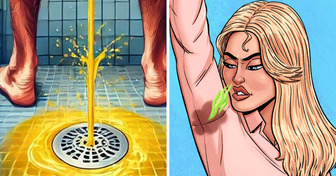6 Dementia Symptoms You May Not Realize Right Away

You may have noticed that your socks sometimes leave reddish marks around your ankles. If it happens only once or twice, the culprit is likely just a tight elastic band. But if sock marks appear regularly, it could be your body’s way of signaling that something’s wrong. We’ve researched the possible health issues these marks can indicate — and at the end of the article, you’ll find extra tips on how to prevent them.
CONTENT IS PROVIDED FOR INFORMATIONAL PURPOSES ONLY AND IS NOT INTENDED AS A SUBSTITUTE OF MEDICAL ADVICE. SEEK GUIDANCE OF YOUR DOCTOR REGARDING YOUR HEALTH AND MEDICAL CONDITIONS.
When the veins in your legs become weakened, they can’t return blood to your heart quickly enough. Blood then backs up in your leg veins and leads to painful swelling. This condition is one of the contributing factors to varicose veins. If you’re getting sock marks regularly, your body might be trying to send you a signal that your veins don’t let blood flow back up to your heart.
If your body doesn’t get enough water, it may damage your blood vessels. Damaged veins may begin to create small leaks that allow fluid to build up in the surrounding tissue. Common places for this fluid to be collected are around the ankles and feet. Sock marks that appear around your ankles may indicate that your body is dehydrated.
Certain medications can also cause lower leg swelling. Some kinds of antidepressants and blood pressure medications may lead to the unpleasant feeling of swollen feet. Certain types of contraception (especially birth control pills that contain estrogen) can change hormone levels in a woman’s body and cause water retention and leg swelling.
This chronic swelling condition occurs when the lymphatic system — a key part of the immune system — isn’t working properly. According to Dr. Teter, Vascular Surgeon with Hackensack University Medical Center, lymphedema can develop as a side effect of cancer treatment, result from infection or injury, or appear without any clear cause. Excess body weight is also a known risk factor.
Lymphedema most often affects an arm or leg, causing swelling, a feeling of heaviness or tightness, limited range of motion, recurring skin infections, and thickening or hardening of the skin, she adds.
If sock marks appear on your legs regularly, it’s best to consult a doctor. But you can improve the condition by following some simple recommendations that can ease the unpleasant feeling of swollen legs.
Not every symptom signals a serious problem, but some subtle signs from our bodies can hint at underlying health issues — and they’re easy to overlook.











